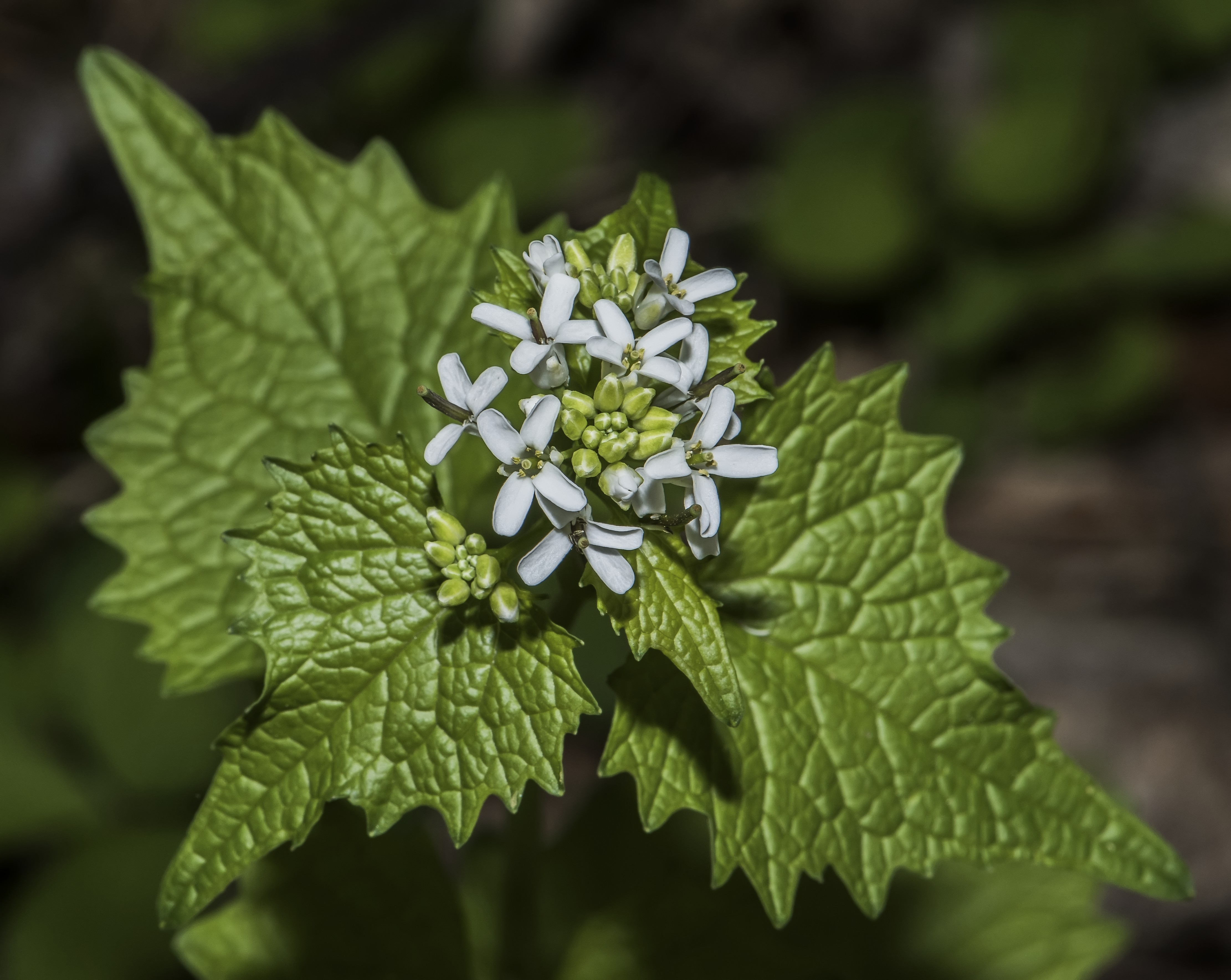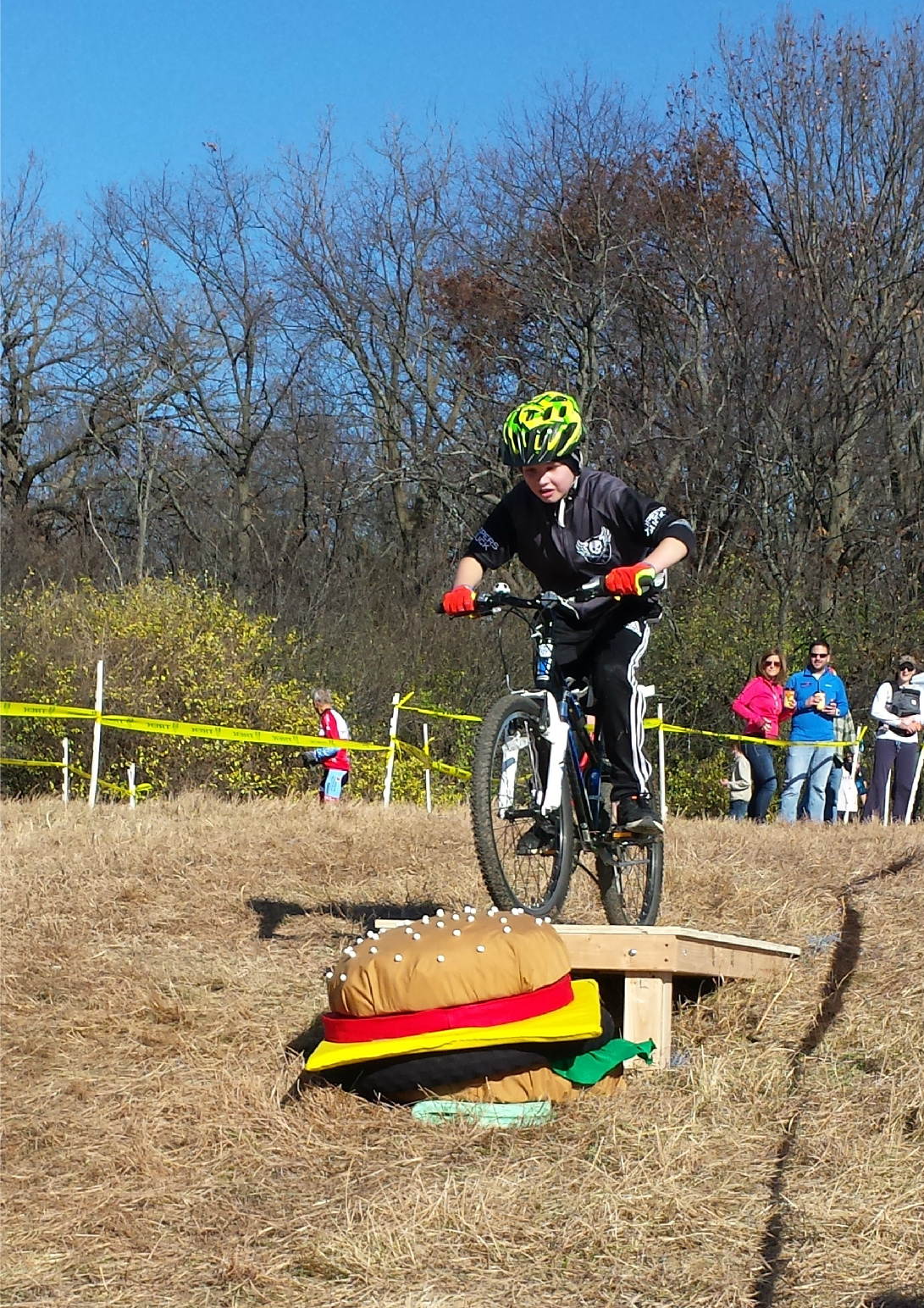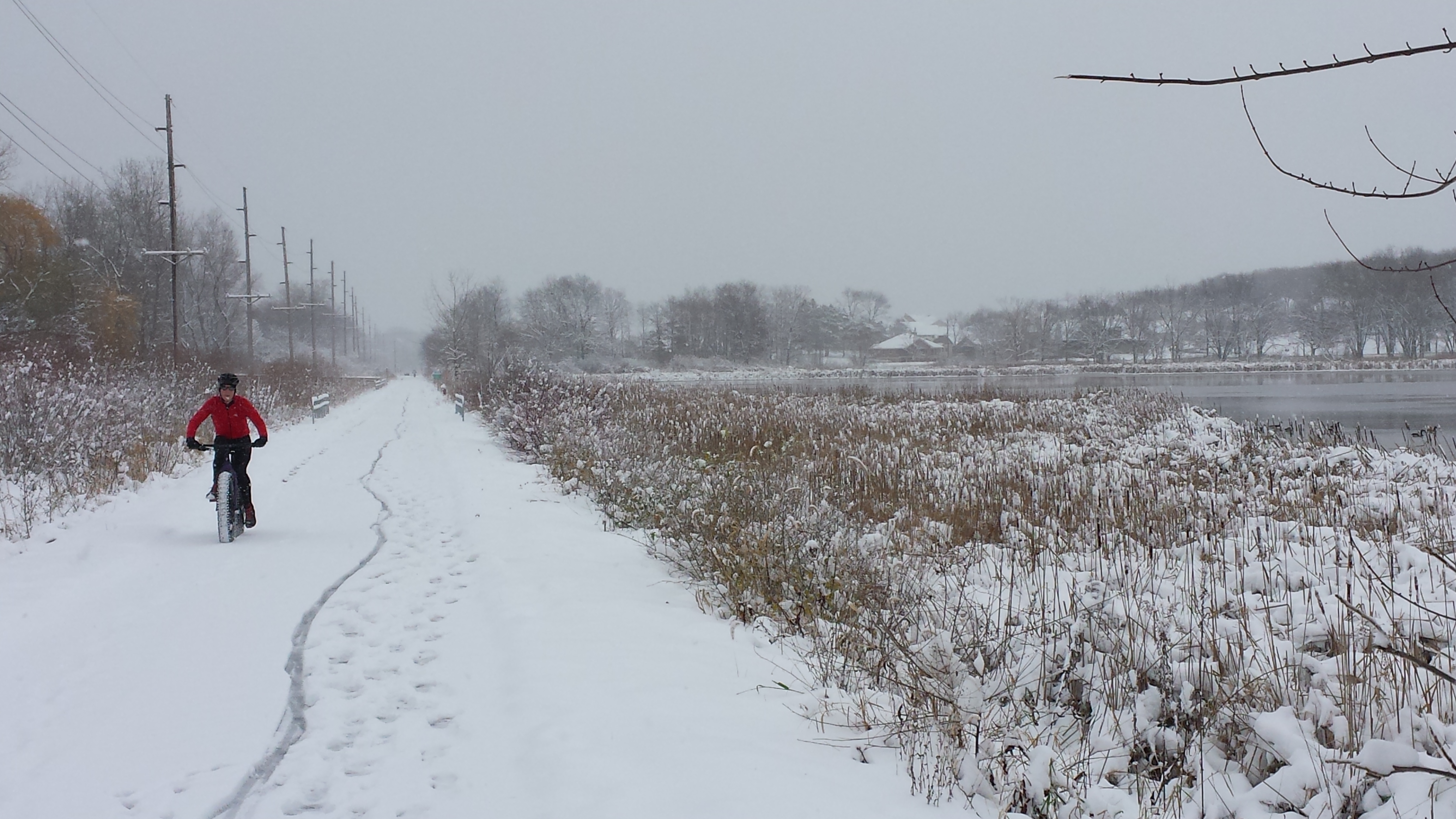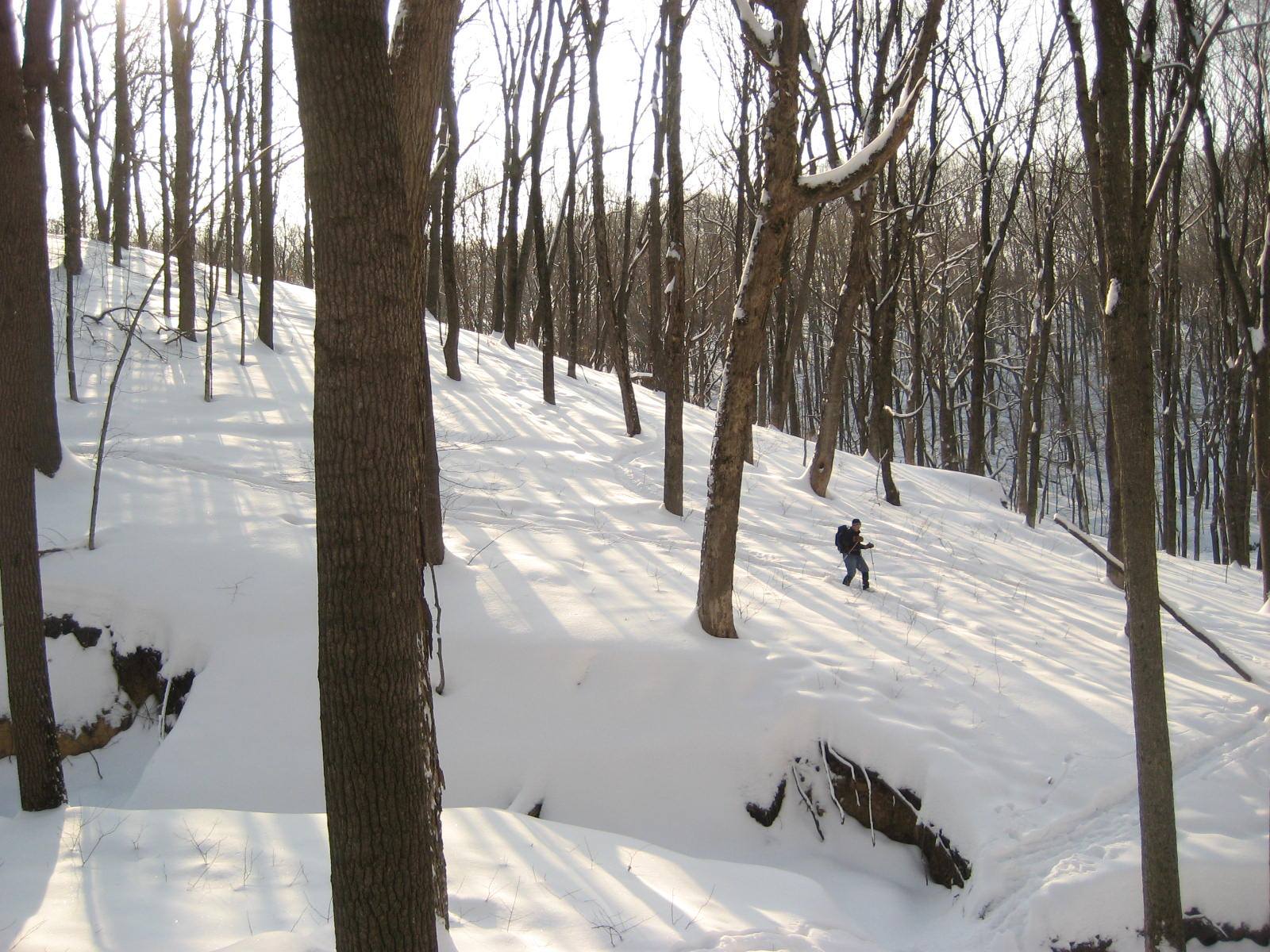Garlic mustard

Inside the hidden war to save our trails
By Chris Schotz
Garlic mustard sounds like a hot dog’s worst nightmare, but the truth is even nastier.
This invasive plant has a perfect set of traits that have allowed it to spread through hardwood forests from Maine to Oregon, with only valiant foot soldiers to check its advance one plant at a time. In its first year, garlic mustard is an innocent-looking rosette at ground level that might be mistaken for Creeping Charlie, but left to its own devices, garlic mustard will suddenly shoot up to four feet tall the following spring. These plants grow fast enough to choke out native plants and tree seedlings, and in addition to their prominent height they also release an anti-fungal chemical that disrupts the natural growth of native vegetation. Over time, a forest infected with garlic mustard will evolve into a wasteland unrecognizable to Midwestern outdoor enthusiasts.
As I travelled through the Midwest, I started wondering why some trails seem to be completely overrun with garlic mustard, while others seem to have been totally spared. I’d found high-traffic southern Wisconsin trails like Kettle Moraine and Devil’s Lake filled with the plant past the point of recovery, and I’ve seen it farther north at Standing Rocks in Portage County and some controlled patches in my home territory of Lincoln County.
Wisconsin DNR land invasives specialist Kelly Kearns warns that a trail crew that believes their system is free of garlic mustard probably just hasn’t spotted it yet. Garlic mustard has been found in nearly every county, but it does prefer the hardwood forests farther south. Kearns told me that northern Illinois has more garlic mustard than Wisconsin and that the threat decreases farther north, but does not go away, especially as the climate changes. Garlic mustard is actually native and common in southern Europe, and it was probably brought to North America as an herb before the Civil War. It doesn’t mind the shade, so it is quite capable of invading mature hardwood forests and choking out new seedlings. The plant’s only weakness seems to be the soil of pine forests.
The first step is to identify the enemy. Garlic mustard is a biennial that will be found in two distinct phases. First year plants germinate in April and are found in bunches of kidney-shaped leaves that become wrinkled in fall and stay green all winter. Second year plants produce a stalk up to four feet tall with triangular shaped leaves that alternate on the stem. Its small white flowers make it stand out in Midwestern forest from April to June. Pulling a plant often reveals an odd S-shaped bend just below the soil surface. By July, the seed capsules form and are ready to disperse hundreds of tiny black seeds. I have to admit that I have trouble picking garlic mustard out of a crowd in all its varied phases, so the surest way for me to determine if a suspicious plant is garlic mustard is to crush it and sniff it. They call it garlic mustard for a smelly reason.

The threat of the spread of garlic mustard caused this trail to be temporarily closed in the Underdown Recreation Area.
The long fight
Once identified, the extended war against garlic mustard can begin, and the best defense is to prevent the spread of the plant in the first place. Unlike other invasive species that are disbursed by birds, wind or water, garlic mustard is most often spread by large mammals like deer, bear and people because its virtually-invisible seeds hide in soil that can stick to feet, fur, boots and bikes. These little black seeds can stay viable for six to possibly ten years, so vigilance must be long term. The clock starts over if one year of treatment is missed.
I’ve heard of a private trail in southern Wisconsin where bikes and gear are subject to inspection to make sure no contaminated dirt touches the trail, but some of the most of the most popular trails already have already been invaded. Kearns told me that it is too late to fight the problem by keeping people out. If every affected park in Milwaukee County were closed there would be practically no parks left. After hiking or biking in a garlic mustard area, people must take precautions before returning home. Use the bike washes provided at the Muir trails and elsewhere. Remove every speck of dirt from shoes and tires. I used to think that the bike wash was just there as a courtesy to keep our bikes pretty, but there is a much more serious reason for those hoses to be there.
State and county officials are well aware of the problem, and they can bring a serious arsenal to the fight when made aware that invasives are present. In highly-infested areas like southern Wisconsin, this often involves sending teams out to pull all of the plants along a trail corridor by hand in the spring before they can drop their seeds onto the trail. Less infested areas have a chance to push the plant back if they are ready for some hard work year after year. Portage County Parks Director Gary Speckman has been battling garlic mustard since a small patch was identified on the Standing Rocks trails ten years ago, back when few had even heard of garlic mustard or knew how to fight it. The first small patch was mistaken for a native plant and mowed. By the next year the small patch was ten times as large, and it has subsequently spread deeper in the park on the tires of bikes and the hooves of the plentiful deer that seem so tame at Standing Rocks.
As the plant spread across Portage County, Speckman learned that the fight would take precision in addition to brute force and determination. Pickers are paid a dollar per pound to pull 3,500 to 5,000 pounds of garlic mustard per year. This includes the local mountain bike club, disc golfers, church groups, students from the Wisconsin Youth Conservation Corps and those with court-ordered community service. Picked plants need to be spread out in the sun to die, and they are often burned because the seed pods can continue to develop using stored energy in the leaves and stems even after the plant is pulled. Portage County also sends out teams of sprayers in the spring and fall, but timing is critical. Teams must wait for spring plants to emerge from leaf litter, but they must catch the garlic mustard before native plants emerge. Timing in fall is even tougher. Certified chemical applicators have to wait for a hard frost to kill native plants, but their sprayers freeze up and poisons aren’t effective against garlic mustard in the cold, so they must hope for one of those rare Indian Summer days when the temperature climbs above 60°.
Portage County has even made use of the UW-Stevens Point fire crew to burn off large areas infested with garlic mustard. I can only guess that it smelled like a Pizza Hut on fire for miles. Speckman has spent days sitting on a bucket pulling garlic mustard until nothing was left growing. Small patches in some parks can be eliminated, but when adjacent landowners let garlic mustard run wild on their property it convinces him that his goal should be merely control and not complete elimination.
Farther north in Lincoln County, garlic mustard was first found in 2006 on private property to the west of the Underdown Recreation Area, with its 20 miles of single track and additional 20 miles of equestrian trails. Evidence indicates that garlic mustard was initially deposited by logging equipment and then spread by animals elsewhere in the Underdown, but it was caught soon enough so that containment is possible. Immediately, snow fences went up around patches of garlic mustard so that dogs and deer could not spread the seeds. A section of equestrian trail along a popular lake has been closed every summer, and several areas in the horse campground were closed and treated. Lincoln County Forester Kevin Kleinschmidt restricts timber sales to winter in some areas, and he makes sure that loggers do not disturb the soil. Logging equipment is pressure washed after operations are complete. Loggers are some of the most invasive-educated users of the forest because their livelihood depends on healthy trees.
Kleinschmidt’s foresters spend two-to-three weeks spraying every spring, and they go back a month later to check of the effectiveness of herbicides that include the plant killer glyphasate (generic Roundup) and the heavy duty chemical Oust that has a residual effect. Weed torches have been used to burn seeds, and the county sets a GPS marker on every known occurrence. Private landowners have helped pull garlic mustard so that it prospers nowhere in Lincoln County. So far, no silent sports trails have been closed for garlic mustard containment in Lincoln County, but it may just be a matter of time. Small patches have popped randomly up several miles apart. It may be impossible to completely eliminate an insidious plant like garlic mustard from 100,000 acres of county forest, but Lincoln County seems to be gaining ground.
A silver bullet
I’m sure that Speckman and Kleinschmidt would rather not battle garlic mustard until they retire, and now there is new hope that they may outlast the determined plant. Some readers are probably thinking that the problem with this mustard is the lack of ketchup, while others who don’t find invasive species funny at all may wonder what Europe has that keeps garlic mustard from covering the whole continent. The answer is no condiment, but a bug as small as a pepper grain. The idea is to introduce the natural pest that keeps garlic mustard in check across Europe, but not to release some new menace that will cause even bigger problems in the Midwest. Since 2003, the University of Minnesota has collaborated with Swiss labs to test four European weevils and how they wobble.
U. of M. Department of Agronomy and Plant Genetics researcher Dr. Jeanie Katovich and her team have been testing in a double-airlock quarantine facility. There they test the weevils on every species of mustard native to North America to ensure that they will only kill garlic mustard, and this year Katovich is ready to announce that two of them may be submitted for approval as early as this fall. This includes a pepper grain-sized crown borer and another weevil as huge as a sesame seed whose larvae eat the mustard seeds right in the pod. Studies on two other weevil species that feed on garlic mustard stems aren’t far enough along for approval at this time.
Before these weevils can be released in North America, they must undertake a rigorous approval process that would make most weevils fall down. Both the U.S. Fish and Wildlife Service and the Animal Plant Health Inspection Service will examine the whole range of tests done by the Minnesota researchers to make sure the pest only hits their target. The duration of this process is out of the hands of Katovich, but she is hopeful that these two weevil species will provide good control of garlic mustard. The expected release of the weevil will have a high front-end cost but should be self-sustaining once they are established. The unknown factor may be how these Swiss weevils react to the Midwestern climate, but I know Speckman and Kleinschmidt are eager for relief. They aren’t going to surrender to garlic mustard, and they also know it’s too early to let biological controls like weevils take over the fight. Silent sports users of the forest still need to watch for garlic mustard and keep their gear clean, because there are no guarantees that this fight is over.









